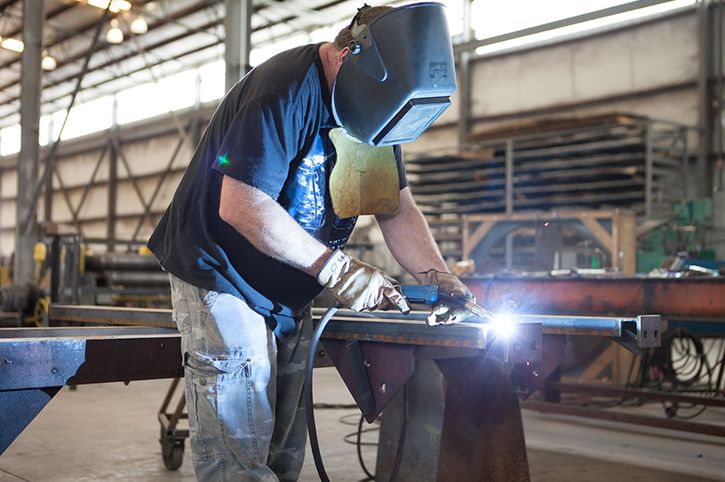Welding WPS: Usual Mistakes to Stay Clear Of and Exactly How to Correct Them
Welding WPS: Usual Mistakes to Stay Clear Of and Exactly How to Correct Them
Blog Article
Opening the Power of Welding WPS: Methods for Performance and Safety in Construction
In the realm of fabrication, Welding Procedure Specifications (WPS) stand as the backbone of welding procedures, determining the essential actions for attaining both performance and safety and security in the construction process. Recognizing the details of WPS is critical to using its complete potential, yet many companies have a hard time to open the true power that exists within these files (welding WPS). By delving right into the methods that optimize welding WPS, a world of improved performance and increased safety and security waits for those ready to explore the nuances of this essential aspect of fabrication

Importance of Welding WPS
The relevance of Welding Treatment Specs (WPS) in the construction market can not be overstated. WPS act as an essential roadmap that describes the essential actions to ensure welds are carried out constantly and correctly. By defining vital specifications such as welding processes, materials, joint layouts, preheat temperature levels, interpass temperature levels, filler metals, and post-weld warm therapy needs, WPS give a standard technique to welding that enhances efficiency, quality, and safety and security in fabrication procedures.
Adherence to WPS assists in accomplishing uniformity in weld quality, decreasing the chance of defects or architectural failures. This standardization also promotes conformity with market guidelines and codes, making certain that fabricated frameworks meet the called for safety criteria. Additionally, WPS documents makes it possible for welders to duplicate successful welding treatments, causing consistent outcomes across different projects.
Fundamentally, the precise advancement and rigorous adherence to Welding Treatment Specs are critical for upholding the honesty of welded frameworks, guarding versus possible dangers, and promoting the credibility of construction companies for supplying high-quality services and products.
Secret Elements of Welding WPS

Enhancing Efficiency With WPS
When optimizing welding procedures, leveraging the crucial elements described in Welding Procedure Requirements (WPS) becomes vital for taking full advantage of and improving procedures performance. One means to improve performance with WPS is by thoroughly picking the suitable welding criteria. By sticking to the particular standards given in the WPS, welders can ensure that the welding devices is established properly, resulting in regular and premium welds. In addition, following the pre-approved welding sequences outlined in the WPS can significantly lower the time invested in each weld, eventually increasing total efficiency.
Frequently evaluating and upgrading the WPS to include any kind of lessons learned or technical innovations can also contribute to effectiveness enhancements in welding procedures. By embracing the guidelines established forth in the WPS and continuously looking for means to enhance procedures, makers can attain greater effectiveness levels and remarkable end outcomes.
Ensuring Safety in Fabrication

Safety and security protocols in fabrication play an essential function in securing workers and enhancing operational procedures. Making certain security in fabrication entails a multifaceted method that includes numerous elements of the welding procedure. One fundamental element is the provision of personal protective equipment (PPE) tailored to the details hazards existing in the construction environment. Welders need to be geared up with proper gear such as helmets, gloves, and protective garments to mitigate dangers connected with welding tasks.
Additionally, adherence to proper air flow and fume removal systems is essential in maintaining a healthy workplace. Welding fumes contain harmful substances that, if inhaled, can present serious health and wellness threats. Carrying out efficient air flow procedures aids to lessen exposure to these harmful fumes, promoting respiratory wellness among employees.
Routine tools maintenance and examinations are likewise crucial for making certain security in construction. Malfunctioning machinery can lead to crashes and injuries, emphasizing the relevance of routine checks and prompt repair work. By focusing on precaution and cultivating a culture of understanding, manufacture facilities can create a efficient and safe workplace for their personnel.
Executing WPS Best Practices
To enhance functional efficiency and guarantee top quality results in fabrication procedures, integrating Welding Treatment Requirements (WPS) anonymous finest techniques is critical. Picking the suitable welding process, filler material, and preheat temperature specified in the WPS is critical for achieving the desired weld top quality. Ensuring that certified welders with the necessary qualifications bring out the welding procedures according to the WPS guidelines is vital for consistency and integrity.
Conclusion
In verdict, welding WPS plays an important duty in guaranteeing efficiency and safety in manufacture processes. By concentrating on crucial elements, enhancing efficiency, and applying finest methods, business can maximize their welding operations. It is necessary to prioritize security measures to stop crashes and make sure a smooth production procedure. By following these techniques, companies can unlock the complete capacity of welding WPS in their manufacture operations.
In the world of construction, Welding Procedure Specifications (WPS) stand as the foundation of welding procedures, determining go the required actions for attaining both performance and safety and security in the manufacture procedure. By defining necessary parameters such as welding processes, products, joint designs, preheat temperatures, interpass temperatures, filler steels, and post-weld warmth treatment requirements, WPS provide a standard method my sources to welding that improves efficiency, quality, and safety and security in construction processes.

When optimizing welding procedures, leveraging the key aspects described in Welding Procedure Specifications (WPS) ends up being essential for simplifying procedures and maximizing performance. (welding WPS)
Report this page